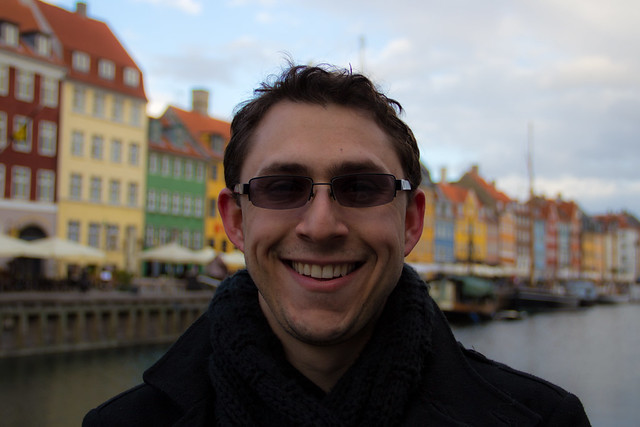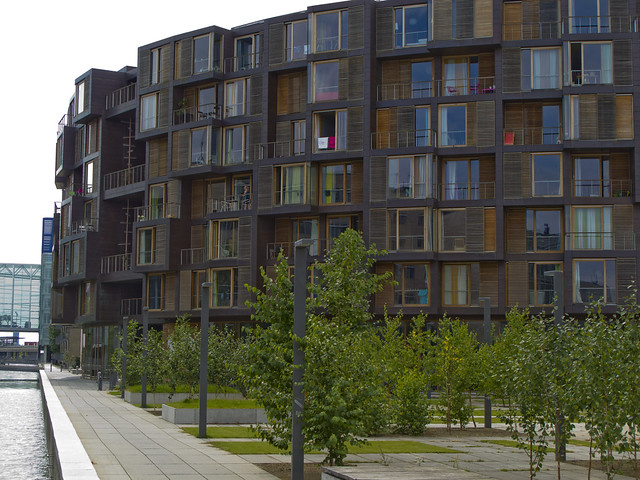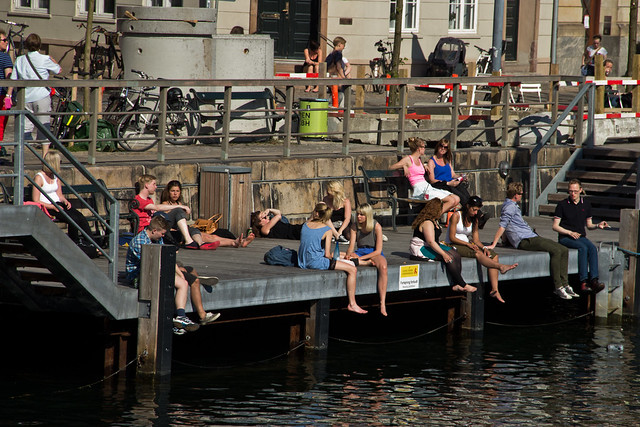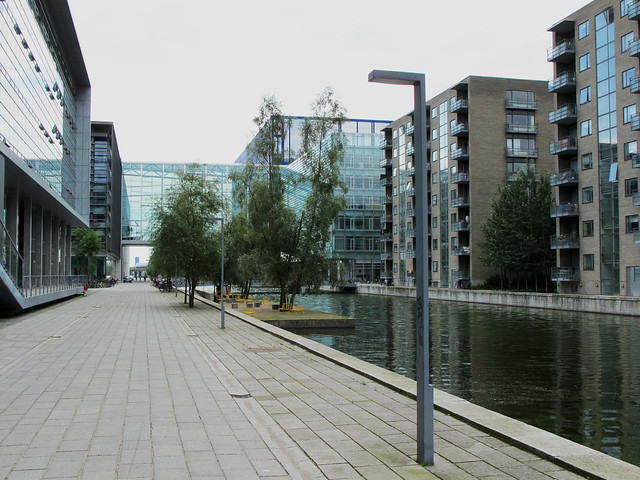Please Don’t Segregate Me!
It’s one of the fundamental but often overlooked or ignored pleas that international students make. As a full degree student (someone doing an entire MA program here in Denmark) one of my biggest concerns and top priorities was to break free of the international student bubble that defines most study abroad experiences. In short, when coming to Denmark, I really wanted to make sure I made Danish friends, ate Danish food, and even gave Danish fashion a go. Don’t get me wrong, I LOVE my fellow international students and spend a majority of my time with them – but the core of my experience as an international student in Denmark is, and will continue to be, shaped by how I engage with Danes and Denmark as a whole.
The challenge is that key aspects of how international students are treated and supported by local universities fundamentally set international students up to remain isolated. This past week a great article was published introducing a new International Student City being planned, pitched, and pursued for Copenhagen. The ISCC as it will be called is really exciting. In fact, it’s a project I’d love to get involved with. It is something that Copenhagen needs and it is something that has immense potential to dramatically improve student life and student experiences here in Copenhagen. Unfortunately, as it is currently structured, it also includes elements which will essentially double down on Copenhagen’s current issues.
It all starts with housing
There’s not enough student housing in Copenhagen, for anyone. Danes struggle with it in a major way and face many (but far from all) the hardships that international students face. Of the student housing that is available a lot of it is isolated and far removed from the University’s centrally located campuses. While Danes typically know how the system works and are able to apply to the various waiting lists relatively early on, international students often find themselves last in the queue for dorms and are forced by necessity into the city’s least desirable student housing. These dorms are often over-priced and/or located in suburbs, most of which are 30-50 minutes outside the city. Other dorms or private kollegiums around the city have low international quotas and/or don’t take international students at all. These often have in-depth application processes and are impossible to get into during the first 6-8 months of your student career.
While everyone wants to be centrally located, it is absolutely essential for international students. These students need the immersion that comes with being a short walk from events and situated in the heart of a city’s nightlife, café life, and overall experience. This is particularly important during the first months when habits, friendships, and lifestyle are formed. Having a 40-minute commute each way discourages students from meeting for casual coffees, doing spontaneous events, and attending cultural activities. It leaves one holed-up in a room, on the computer talking to friends back in your home country, disengaged and detached from the culture you’re ostensibly here to experience.
It’s important to remember that as a full degree student you arrive in a foreign country, in a city you know nothing about, where you have no friends, and where you have minimal support. For me, the sum total of my time in Denmark before my MA program began was three days. Those first few months were rough. Classes hadn’t started yet. It was hard to make myself go out. It was lonely and I was isolated. When I couldn’t take it anymore I’d go out to the bars alone and desperately try and strike up conversations with total strangers. I know it was the same for a lot of my fellow students and I know that it can be a real deal-breaker for many people. It hurts your grades, it hurts your health, and it can be brutally rough.
Those of us who knew that living in a central location was essential were forced to explore renting private apartments. This came with the trade-off that we had to forgo the fun, immersion and community of a rich dorm experience. It quickly devolves into an either or situation, when what students really need is a combination of the two. No easy task given that Copenhagen has an extremely abusive rental market. Danes are lovely. Many Danish landlords, however, are not.
While my female friends have had an easier go of it, as a male international it is extremely difficult to find housing in Copenhagen. There’s very high demand for places and, just as in other parts of the world, people either look at an international student as extremely desirable or extremely undesirable. There’s not much middle ground and unfortunately, most landlords seem to lean towards the latter. That’s common enough and nothing can really be done about it. Where it really gets frustrating, however, is the approach taken by many landlords who will rent to international students. These individuals provide rooms for rent but those rooms come with a wide range of ridiculous rules and restrictions. It’s not uncommon that they’ll rent a room but prohibit or restrict access to the kitchen or common spaces. They’ll ban renters from having guests over or require them to gain previous approval. To be clear here, I’m not talking about raging parties. I’m talking about having a single friend over or quiet dinner. These landlords exploit their renters as a revenue source to supplement their income but are unwilling to grant them most of the basic rights and access you would and should receive as a renter.
The whole issue is magnified because many also demand 3+ months of rent in advance as a deposit which more than a few will later try and confiscate as an added bonus knowing that it’s difficult for international students to follow up or take legal action. Other landlords provide subleases which are off the books and in turn allow them to collect rent without declaring it to the government. International students make easy targets because they don’t know their rights, how the system works, or what is normal.
International Student Housing
This would all seem to point to an easy solution which ISCC seems to be pursuing: Create a sprawling student complex situated in a fairly central part of Copenhagen that is designed for, and limited predominantly to, international students. The idea is spot-on in several ways – they’ve noted it has to be right next to a metro stop, it needs to be central, and it should provide a variety of services to improve student life.
Unfortunately, however, the entire structure seems to revolve around creating what will quickly become a completely insulated international mini-city in the heart of Amager. The article notes:
“The plan is that different nations would build their own student houses for at least 100 students within the student city. The building designs should reflect the nation’s architectural traditions and the idea is to have an exchange agreement among the various international houses. Half of the students from each individual country will stay in their own ‘national’ house, will be spread among the other houses in an effort to mix cultures and traditions together.”
Which sounds great on paper but is unfortunately an absolutely disastrous idea! Not only would the ISCC be isolating international students from their Danish counterparts but, they’d be isolating them from each other.
International students inevitably tend to slip into comfortable cultural groups. East Asian students congregate together, as do Indian students, European Latins and Hispanic/South Americans. Typically there is another block of Central and Eastern Europeans while English-speaking Europeans, North Americans, Australians, Scandinavians, and New Zealanders also form a large block. Cross germination occurs but it is usually limited. While the idea behind the split cultural dorms is probably meant to help bridge this, the reality is it would more than likely just re-affirm and strengthen it.
What’s the answer then? Prioritization and integration. The ISCC needs to be a fully incorporated student city, not just an international student city. At least 30% of the students living in the dorms and on the facility need to be Danes. More importantly though, the entire structure needs to revolve around how, at a very basic level, students can be better integrated.
International students need to have prioritized access but not exclusive access. Full-degree and PhD students need to have first priority, with year-long exchange students next in line, followed by short term/semester students with roughly the same priority and access as Danish students.
It is important for organizers to remember that students on short term exchange are often provided with a group of peers all arriving at roughly the same time and have significantly more resources, support, and access to existing infrastructure than long term and full-degree students.
Concepts like International or Danish dorm floors should be avoided as should reinforcing cultural segregation. It’s important to keep in mind that cultural exchange occurs by simply sharing each other’s company. Attempting to force it only builds barriers. However, things like restaurants, shops, or themed-facilities created for general use are great and fun ways to explore culture in a more subtle fashion.
Organizers must keep in mind that rental rates for any project of this nature need to be competitive. I know students paying more than 5,000 DKK for a dorm room which is absolutely ridiculous and extremely detrimental in its own way…especially when compared to the 1,500-2,500 DKK being paid by many Danish students in Kollegiums around the city.
Beyond Just Housing
While a huge aspect of the ISCC concept revolves around housing, and that is what this post has focused on, another key issue that Danish universities need to review in-depth is the way they segregate classes and social events. I realize that funding is an issue and that in some ways English-based university courses are provided as an added value service BUT the reality is that if more engagement and immersion is the goal, you have to allow Danish and International students to interact.
I’ve repeatedly seen courses at KU where despite an expressed desire and eagerness to take courses in English, Danish students have been told they need to/are only allowed to take lectures and courses in Danish. In a recent media course I took, the group lecture was provided in English with three seminar courses offered. Of these two were in Danish (though taught by faculty fluent in English) and the third was taught in English. Danish students were forced to take the group lecture in English and then prohibited from taking the English seminar which was essentially limited to international students.
Academic and administrative organizational issues of this nature mean that throughout our academic career, international students are fundamentally segregated from Danish students and deprived of many of the most opportune and vibrant socialization and networking opportunities.
A Great Idea
As the article notes, there are 18,000 students in Copenhagen this year and they have a goal of growing that figure to 30,000 by 2025. If Copenhagen is serious about the ISCC (which I hope it is!), it is important that key steps are taken that not only provide infrastructure that sounds viable on paper, but which actually fulfills students’ needs. This is especially significant if Denmark wants to retain some of that expertise moving forward and if the country is serious about realizing many of the benefits that a vibrant and well-integrated student population can provide.
Have thoughts or experiences of your own that would help the discussion? Please share them in a comment.






Leadership! Straight information that will make KU one of the most advanced learning centers in Europe. Necessary changes that will bring out the best qualities in students and enhance Denmark.
Thank you!
Ok, I have to disagree with the part about the commute. While I understand the commute might not be for everyone, it definitely did not discourage me to go out (as we all know… I wouldn’t have my “usual” bars if that was the case). It might, however, discourage me from making multiple trips back and forth to my old spot (although, I still did that quite a bit, too). If I didn’t want to go back to my spot and had time to kill, I had to figure out more things to go do, spending more time in the city and more time with friends. You just had to be a little bit more prepared for the day perhaps, as you could end up doing many different things, but it didn’t discourage me to go out. I swear I spent more time in the city when I lived further out than I do now because of that. Plus, the commute isn’t SUCH a bad thing when you think that you have that time to sit and read, as that is how I have gotten the majority of my readings done here in CPH. Trust me, I’m not the type to take more time out of my day to do readings than absolutely necessary. So I had all of this extra free time to do whatever I wanted by doing it on the commute. And having a place to experience outside of Central Copenhagen isn’t necessarily the worst thing in the world… It can be nice to get an experience of greater Copenhagen outside of perhaps the “normal” areas to see. I mean it’s not like there aren’t coffee shops, theatres, etc. that people can meet up at in the suburbs. There is the major component of the student has to be proactive themselves in getting out and about.
However, that being said, I do agree that there should be more affordable housing close to the city, as I have heard the difficulties of many of my friends finding spots to live. However, as you stress, the importance is sometimes in classes. I can go out and meet all the Danes I want in bars, but the odd part is that it is harder meeting Danes who are in my same program. The school provided somewhat mandatory meetings at the beginning of the program for international students, and that is where I have met the bulk of my close friends. I don’t know if Danes had similar introductory meetings for the Danish side of the program, but I don’t know why there wasn’t necessarily an introductory meeting (especially for Film and Media as it is composed of two parts: International and Danish sides) for the overall department/faculty of new incoming masters students.
I don’t mind going out to bars and meeting Danes, as I do enjoy having an alcoholic beverage every now and then… or more than that. However, I have had relatives who have lived here who did not, and they had a tougher time meeting Danes, as classes were their only outlet, as they didn’t have a student job where they could meet Danes (which I do not have either). This is not to say of course that just meeting Danes in classes creates automatic friendships between Danes and internationals, but it is at least a starting off point. I do have to give credit, though, to some of my individual professors who have tried to get Internationals and Danes to work together on group projects or discussions in class.
It definitely comes down to the person, and there is something to be said for the added time students will spend out and about in the city center at the library or coffee shops to avoid the long commute home.
Still, I think you’re also being somewhat optimistic. While you may not necessarily have been overly bothered by your long commute I think it has perhaps influenced your social opportunities more than you think. I can think of quite a few times where you ended a night early (many of which were spent at that usual watering hole) because you needed to catch a bus home or were worried about an aspect of your commute. Other instances come to mind where the commute meant you were unavailable for short notice or spur of the moment trips to the movies or events. Often to the point where outside of an occasional invite to see if you were already in the city for some reason, you wouldn’t even get the invite because we knew it just wasn’t feasible. While things like films are the easiest example of this, other spur of the moment events – quick coffee meetups, etc. – are also relevant. Still, in some ways the solution to this often seems to be that you find and socialize with other commuter students.
Keeping that in mind, I also think you’re a bit of an exception, especially because of your pro-active approach to reaching out and initiating gatherings. When I think about how some of the others who are/or had long commutes have done balancing the same challenge, their results and experience seems to be much less pronounced.
RE: Meeting Danes in bars – I think you introduce another interesting point. The difference between the general social experience for men vs. women. There’s definitely a social advantage in bar culture where both shy and outgoing women will be approached and offered conversation on a semi-regular basis while men are typically expected to initiate that conversation. There’s also certain social expectations that go with those meetings which may or may not be conducive to developing new friendships.
Then there is also the significant social advantage you and I share in being American/English Native speakers and in coming from Baltic/Scandinavian descent which many exchange students do not have.
As we’ve discussed in the past my program only had a very limited number of Danes. These Danes were excluded from the majority of the orientation events and activities because the events were flagged as international only.
I’m not sure how the events for other departments handle integration, but from what I’ve heard and what you’ve said it seems fairly similar. It does seem, however, that the larger programs (eg: Film/Media) set up two internal sub-departments which then in turn segregate students.
It’s great to hear that some of the professors have tried to help encourage integration. It’s small things like that which really make a difference.
Thanks for a great comment and food for thought! Appreciate it!
A great article with a lot of truth and logic in it! Really explains the problem with the integration of international students since it appears that a lot of people are not informed about it.
Pretty much the same during my semester in Sweden!
Classes were for Exchange Students only…which was interesting because we were from all over the world, but missed the “local” prospective on many subjects!
And many activities and events were dedicated to exchange students only. The only Swedish people on these occasions were from the organization/welcoming teams.
The housing facilities where exchange students were located were almost entirely dedicated to them, with few Swedish people around. It was fun, cause I was the only Italian out of 14 people on my floor!But I was lucky enough to have 2 Swedish guys in my corridor and had a great connection with them! Of course I asked why there were so few of them living with us and they told me that it was harsh for them to live with exchange students all the time, because they had to re-start meeting and bonding with new people every 6 months…which was fun at the beginning, but demanding after a while! And plus they had to say too many goodbyes =p
Guess it’s interesting to see all of this also from the prospective of locals…for example in Italy it’s completely different! exchange students have no way out: they HAVE to share everything with locals, especially if you choose universities in small cities!